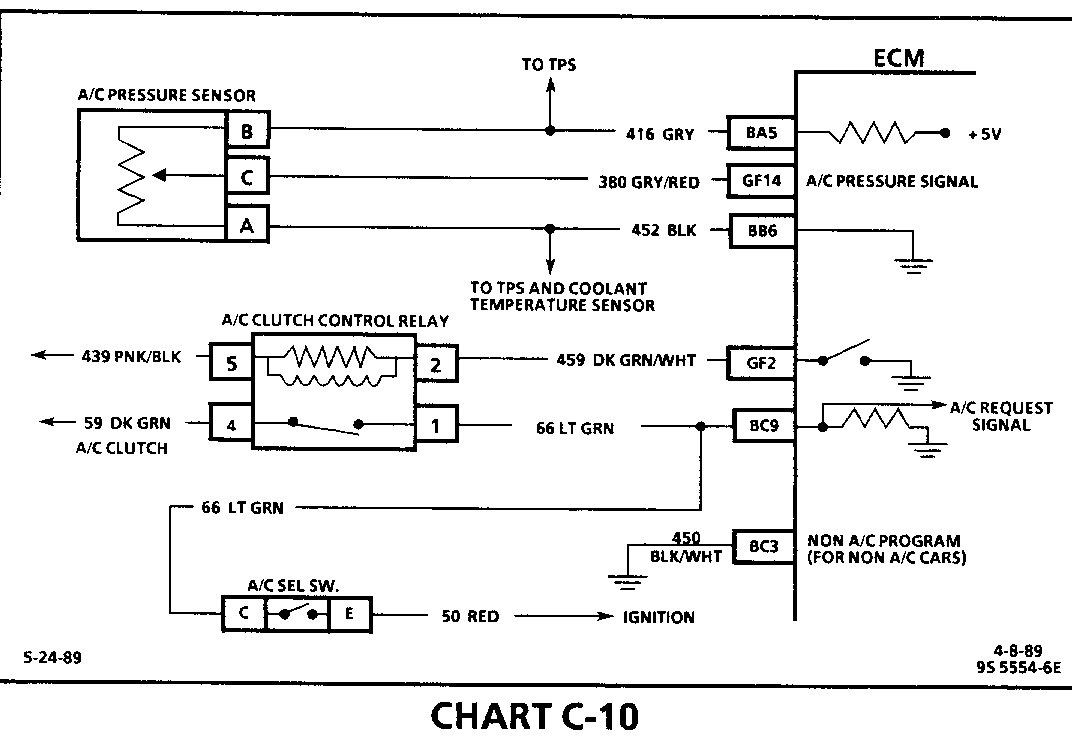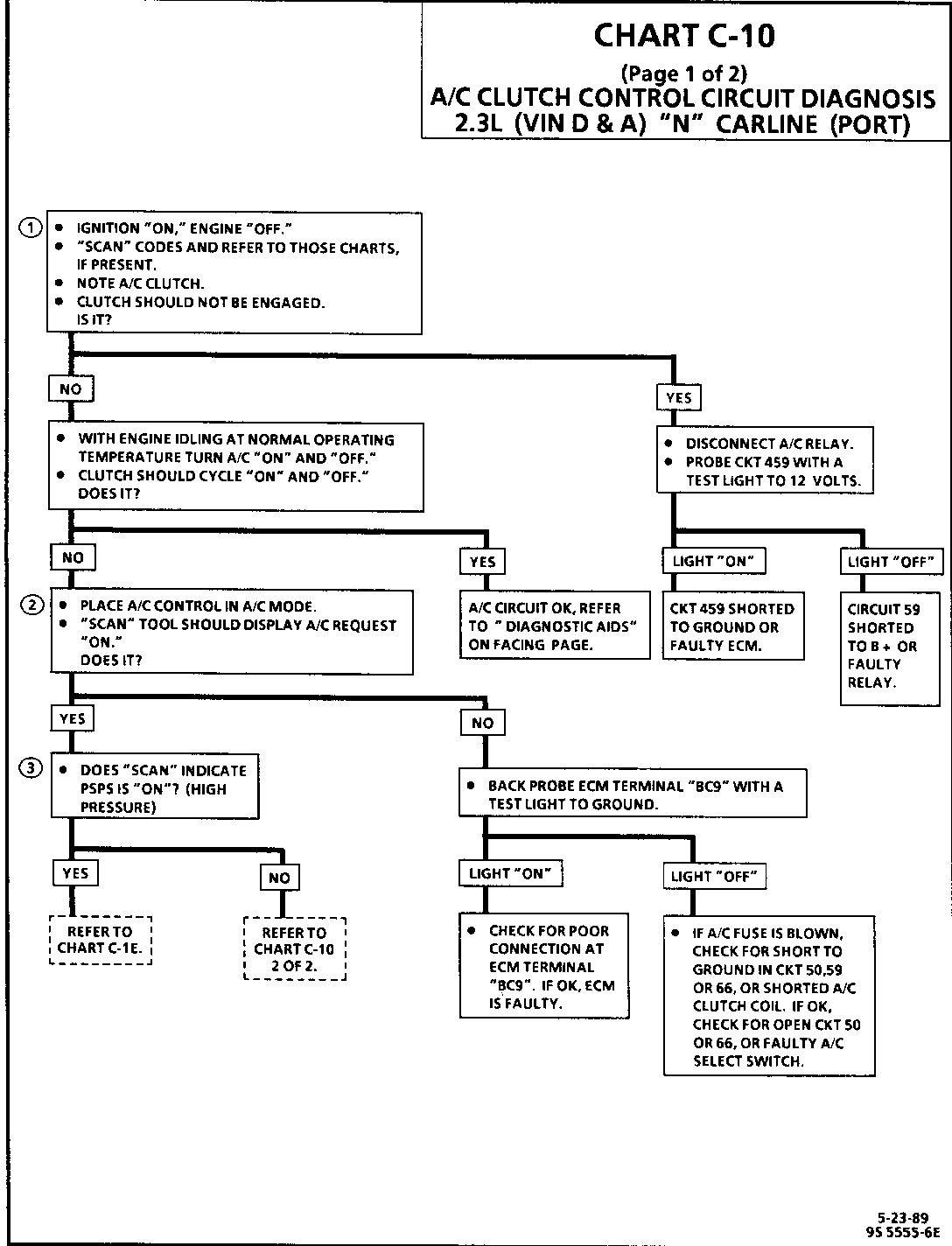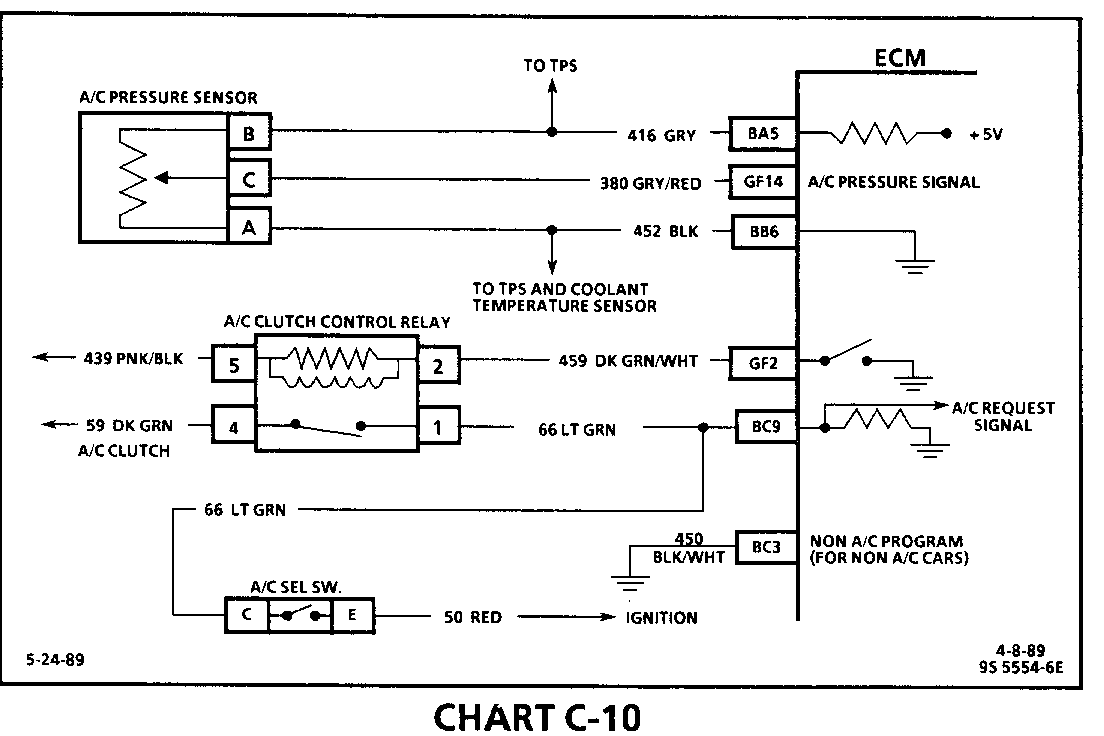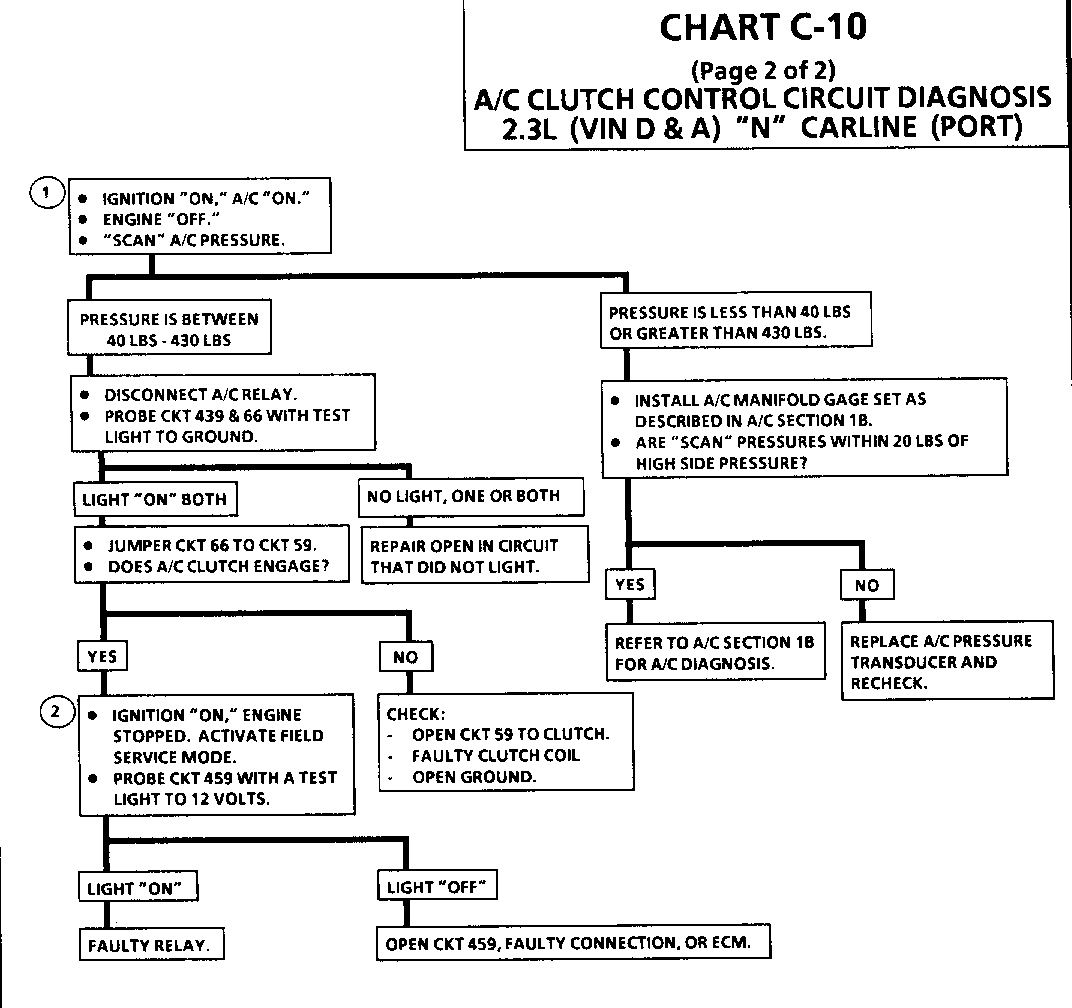MANUAL UPDATE- SECTION 6E3 REVISED CHART C-10

Models Affected: 1988-89 GRAND AM 2.3L (VIN A,D)
This bulletin serves to update Chart C-10 facing page and chart and to add Chart C-10 (Page 2 of 2) facing page and chart in Section 6E3 "Driveability and Emissions" to the 1988 and 1989 Service Manuals with 2.3L Grand Am (VIN D & A) applications.
A/C CLUTCH CONTROL CIRCUIT DIAGNOSIS 2.3L (VIN D & A) "N" CARLINE (PORT) ----------------------------------- Circuit Description: ------------------- The A/C clutch control relay is energized when the ECM provides a ground path through CKT 459 and A/C is requested. A/C clutch is delayed about .3 seconds after A/C is requested. This will allow the IAC to adjust engine rpm for the additionalload.
The ECM will temporarily disengage the A/C clutch relay for calibrated times for one or more of the following:
Hot engine restart. Wide open throttle (TPS over 90%). Power steering pressure high (open power steering pressure switch). Engine rpm greater than about 6000 rpm. During IAC reset.
The A/C clutch relay will remain disengaged when a Code 66 is present, if pressure is out of range described previously in this section, or there is no A/C request signal due to an open A/C select switch or Circuit. Refer to AIR CONDITIONING (SECTION 1B) for more information on A/C refrigerant systems.
1. The ECM will only energize the A/C relay when the engine is running. This test will determine if the relay or CKT 459 is faulty.
2. Determines if the signal is reaching the ECM through CKT 66 from the A/C control panel. Signal should only be present when an A/C mode or defrost mode has been selected.
3. If the ECM is receiving a high power steering pressure signal, the A/C clutch will be disengaged by the ECM.
CHART C-10 (PAGE 2 OF 2) A/C CLUTCH CONTROL CIRCUIT DIAGNOSIS 2.3L (VIN D & A) "N" CARLINE (PORT) ----------------------------------- Circuit Description: ------------------- The A/C clutch control relay is energized when the ECM provides a ground path through CKT 459 and A/C is requested. A/C clutch is delayed about .3 seconds after A/C is requested. This will allow the IAC to adjust engine rpm for the additional load.
The ECM will temporarily disengage the A/C clutch relay for calibrated times for one or more of the following:
Hot engine restart. Wide open throttle (TPS over 90%) Power steering pressure high (open power steering pressure switch.) Engine rpm greater than about 6000 rpm. During IAC reset.
The A/C clutch relay will remain disengaged when a Code 66 is present, if pressure is out of range described previously in this section, or there is no A/C request signal due to an open A/C select switch or circuit. Refer to AIR CONDITIONING (SECTION 1B) for more information on A/C refrigerant systems.
Test Description: Numbers below refer to circled numbers on the diagnostic chart.
1. Determines if the pressure transducer is out of range causing the compressor clutch to be disengaged.
2. With the engine stopped and field service mode activated, the ECM should be grounding CKT 459, hich should ca use the test light to be "ON".
Diagnostic Aids:
If complaint is insufficient cooling, the problem may be caused by an inoperative cooling fan. See CHART C-12 for cooling fan diagnosis. If fan operates correctly, see A/C diagnosis in AIR CONDITIONING (SECTION 1B). A/C pressure outside of a range of 43 to 428 psi will cause the compressor to be disabled by the ECM. Observe "Scan" A/C pressure for 2 minutes with engine idling and A/C "ON". If pressure goes out of range, refer to AIR CONDITIONING (SECTION 1B) to measure and diagnose. "Scan" pressure should be within 20 psi of actual. If not, check for a circuit problem using Code 66 chart or replace sensor.




General Motors bulletins are intended for use by professional technicians, not a "do-it-yourselfer". They are written to inform those technicians of conditions that may occur on some vehicles, or to provide information that could assist in the proper service of a vehicle. Properly trained technicians have the equipment, tools, safety instructions and know-how to do a job properly and safely. If a condition is described, do not assume that the bulletin applies to your vehicle, or that your vehicle will have that condition. See a General Motors dealer servicing your brand of General Motors vehicle for information on whether your vehicle may benefit from the information.
